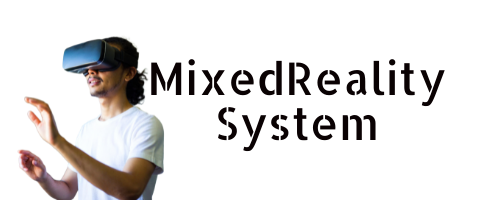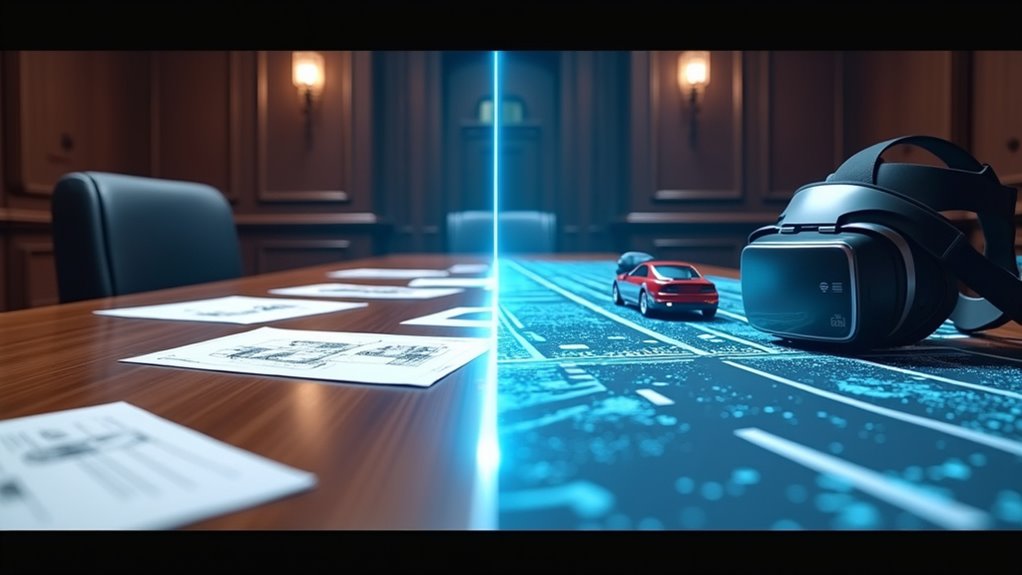At a Glance
- Las Vegas attorneys leverage VR technology to create immersive reconstructions of accident scenes, replacing traditional static evidence presentation methods.
- Jurors can explore accident scenes from multiple perspectives, including driver viewpoints, enhancing understanding of spatial relationships and visibility.
- Technical collaboration between legal teams and VR specialists enables creation of precise, physics-accurate digital reconstructions using LiDAR and photogrammetry.
- Virtual reality transforms autonomous vehicle cases by clearly demonstrating complex technical factors and environmental conditions affecting accidents.
- Las Vegas courts embrace VR technology to provide clearer, more evidence-based proceedings through immersive accident scene experiences.
In a dramatic shift from traditional courtroom exhibits, Las Vegas attorneys are now wielding virtual reality headsets like digital magicians, transforming how accident cases unfold before judges and juries.
Gone are the days of static diagrams and lifeless photographs – today’s legal teams are inviting courtroom participants to step directly into accident scenes through immersive virtual reality experiences.
Using cutting-edge tools like Meta Quest Pro and HTC Vive headsets, attorneys are partnering with tech-savvy forensic specialists to create jaw-dropping reconstructions of crash sites. With autonomous vehicles involved in 9.1 crashes per million miles, these reconstructions are becoming increasingly vital for complex cases.
These aren’t your grandfather’s courtroom presentations – they’re full 360-degree digital environments where every tire mark, street sign, and essential detail is captured through precise LiDAR scanning technology.
The marriage of legal expertise and technological innovation has sparked a revolution in how evidence is presented. Remote collaboration tools enable experts from different locations to analyze evidence together in real-time.
Platforms like RealWear and Matterport are turning complex accident scenarios into crystal-clear virtual experiences, while Pix4D software helps create photorealistic models that would make Hollywood effects artists jealous.
It’s like having a time machine that transports the entire courtroom back to the moment of impact, minus the actual danger.
Behind the scenes, lawyers are teaming up with 3D artists and forensic VR technicians in what looks like a cross between a legal war room and a Silicon Valley startup.
These collaborative efforts are paying off big time, especially when it comes to demonstrating critical factors like visibility lines at intersections.
Instead of trying to imagine what a driver could or couldn’t see, jurors can now literally step into the driver’s seat and look around for themselves.
This technological revolution isn’t just about showing off fancy gadgets – it’s about bringing truth to light in ways never before possible.
When jurors can virtually walk through an accident scene, examine sight lines from multiple angles, and truly understand the spatial relationships involved, justice becomes less about imagination and more about immersion.
Las Vegas courts are betting big on this virtual reality transformation, and so far, the odds are definitely in their favor. The integration of game engine technology allows for physics-accurate accident simulations that bring unprecedented realism to reconstructions.
References
- https://www.techtimes.com/articles/310055/20250418/vr-crash-scene-reconstructions-rise-digital-courtrooms-vegas-personal-injury-law.htm
- https://www.hennessandhaight.com/las-vegas-car-accident-lawyers/autonomous-vehicle-accidents/
- https://nvbar.org/nevada-supreme-court-issues-orders-on-using-remote-technology/
- https://www.venable.com/insights/publications/1994/06/virtual-reality-full-article
- https://www.youtube.com/watch?v=7NB4kCmKpP0



Leave a Reply